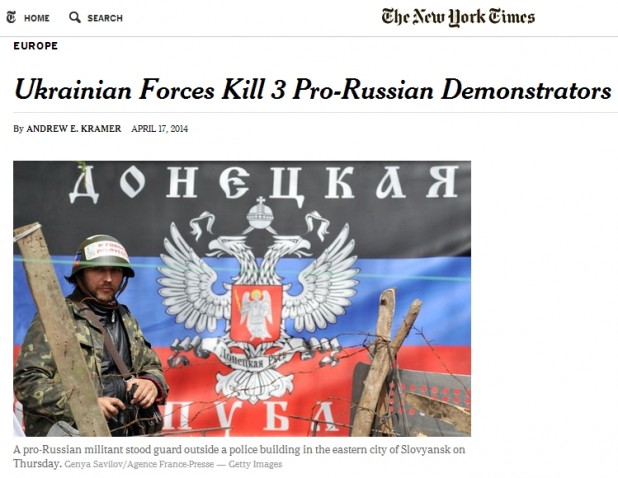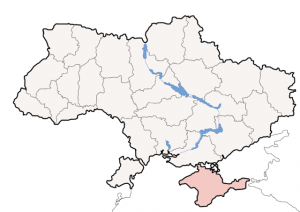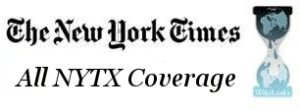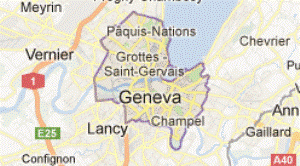EUROPE » TRUTH ADDICT
NYT ‘Lacking the Heart’ to Report Honestly on Ukraine
April 19, 2014 · 1 Comments

By Michael M'Gehee:
In a recent New York Times article by Andrew Kramer readers are informed about how NATO plans to use the ongoing crisis in Ukraine to “strengthen its military presence in Eastern Europe.”
Writing in his piece “Ukrainian Forces Kill 3 Pro-Russian Demonstrators” Kramer reports on “the most lethal [use of force] so far in the east of the country” where, “[a] crowd made up of civilians as well as militants formed outside the base” in Mariupol to demonstrate against the new government in Kiev.
Kramer writes that, “The events in Mariupol overnight, and in the towns of Slovyansk and Kramatorsk, north of the provincial capital of Donetsk, on Wednesday, underscored both the limits of Ukraine’s military and the difficulties of the tactical problems it faces in its attempt to dislodge armed separatists from eastern Ukraine.”
More than the “tactical problems” of the military operation is the political problem. The new government in Kiev has a serious lack of support in eastern Ukraine.
While Kramer does note that it was “a glaring humiliation for the government” when “a military operation to confront pro-Russian militants in the east unraveled on Wednesday with the entire contingent of 21 armored vehicles that had separated into two columns surrendering or pulling back,” and that the “separatists are well armed and have been accompanied by bold local supporters, including unarmed civilians and elderly women, who mingle in front of and among the armed men,” he also writes that the Ukrainian soldiers “lacked … the heart” to “control the crowds that formed around their advancing units.”
What we have witnessed over the last few months is a violent fascist coup against a democratically-elected government that was orchestrated by the United States. It was Assistant Secretary of State Victoria Nuland who was heard in a leaked phone conversation discussing who was to be in the future government for Ukraine.
This was met with a massive popular revolt in Crimea where nearly every eligible voter turned out to vote in a public referendum on rejoining Russia. More than 95% approved the vote, and journalists reported a festive environment of street parties and celebrations.
And then came the popular uprisings in eastern cities throughout Ukraine, where even the NYT reports that “separatists are well armed and have been accompanied by bold local supporters, including unarmed civilians and elderly women, who mingle in front of and among the armed men.”
In some of these cases these “bold supporters” were stopping the Ukrainian troops before the arrival of armed militias. BBC reports that “several hundred residents of Pchyolkino, south of Sloviansk, surrounded another column of 14 Ukrainian military vehicles,” and that, “After the crowd was reinforced by pro-Russian gunmen, negotiations ensued and the troops were allowed to drive their vehicles away, but only after agreeing to surrender the magazines from their assault rifles.”
And the New York Times refers to this as a “glaring humiliation” of soldiers lacking “the heart” to use force. Considering this popular uprising against the coup-government in Kiev, this may explain why NATO is planning to “strengthen its military presence in Eastern Europe.”
Writing in their book, The Washington Connection and Third World Fascism: The Political Economy of Human Rights: Volume 1, authors Edward Herman and Noam Chomsky wrote how "the overall U.S. assault" in Vietnam "as the primary bloodbath.” The two writers state: “Military escalation was undertaken to offset the well understood lack of any significant social and political base for the elite military faction supported by the United States.”
What the world is watching in Ukraine, coupled with NATO’s intentions to expand its presence in the region, is very similar. And this is receiving inadequate coverage by the New York Times, whose on bias in coverage compliments that of the Western establishment, as shown at the end of the article when Kramer refers to NATO’s plans to “send forces to the region as a deterrent.” A careful observer will have noticed that according to the New York Times it is the West who is apparently doing the deterring, and not the “bold local supporters” of those who oppose the coup-government, “including unarmed civilians and elderly women.”
By admin
Readers Comments (1)
Sorry, comments are closed on this post.











As a subscriber to the Times which my wife gives to me as a gift, which I just realized is a continuing year round gift, I can’t tell you how much I appreciate your work in helping me to cipher out the truth as well as I can when reading between the lines at the times. A good friend who was a speechwriter once told me some secrets aobut reading the times, and that one had to find what he calls the “moneyline’ usually buried in articles by writers trying to reveal some special element which traditional media cannot state outright. My friend is a former speechwriter for former President Carter so I value his guidance, but your work helps me go far beyond the “moneyline” sentences usally buried in the times. If I was monied or employed I’d donate but hope to get around to it sooner or later. In the meantime, I just want to recommend your work to all Times subscribers who remember the Judith Miller debacle and several others at the times. It’s a treat to have an alternate view of Times reporting if one is to arrive at the truth unencumbered by what always influences almost every media outlet, it’s supporters, in the Times case it’s subscribers and money and power influences inside and outside of our government and national security structures. I’m trying to study the situation in Ukraine, Microsoft has contractors in that country and I’m sure that must play a part in the seemeing ferocious need to “hold on” to Ukraine. I follow Chomsky but don’t hold to his tenet that all policy makers are malicious, but would see it as more often benign ignorance that becomes not so benign when put into policy. But as someone will usually remind us about these kinds of things, it some of our high school classmates who now run the world. One shudders at the thought!